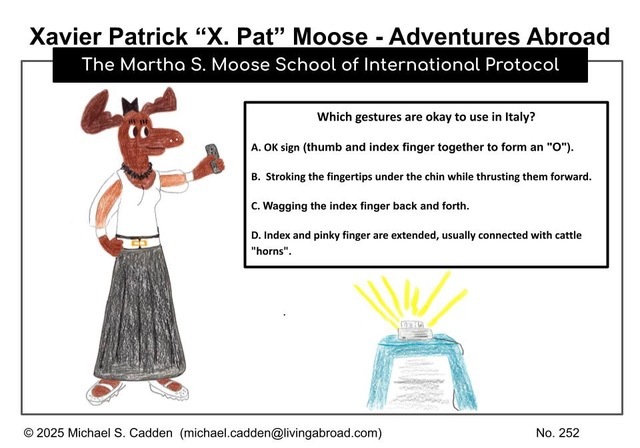

Answers: C.
Gestures and body language
Italians are communicators. They enjoy the language and the art of conversation. Italians maintain eye contact and tend to stand close or to touch each other when conversing, at a distance that is not always comfortable for those from other countries. Do not back away if possible. Despite this habit, Italians do have a sense of personal space. It is not acceptable, for example, to push when in a queue or to touch others.
Gestures are common in Italy and are part of the Italian's communication. Since hand signals are not universal, try to learn which are acceptable in Italy and which are not. The following are a few to note:
- Nodding up and down with the chin held high and the eyes closed means "no," as does wagging the index finger back and forth.
- Stroking the fingertips under the chin while thrusting them forward is a sign of derision or defiance, equal to the U.S. gesture of thumbing your nose at someone.
- Holding the hand palm down with the index and little fingers pointing straight out and the others curving inward symbolizes the devil's horn, which is meant to ward off evil. The same gesture with the fingers pointing upward is an obscene message.
- The gesture known in the U.S. as the "ok" sign (thumb and index finger together to form an "O", other fingers upright) is considered insulting.
- Also insulting is the gesture where the index and pinky finger are extended, usually connected with cattle "horns", but in Italy it is a crude gesture.
Excerpted from Living Abroad's Italy Report / Social customs / Gestures and body language
Written by Michael Cadden, SGMS-T, VP International Operations
